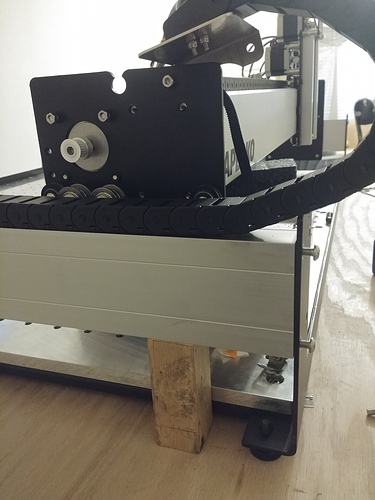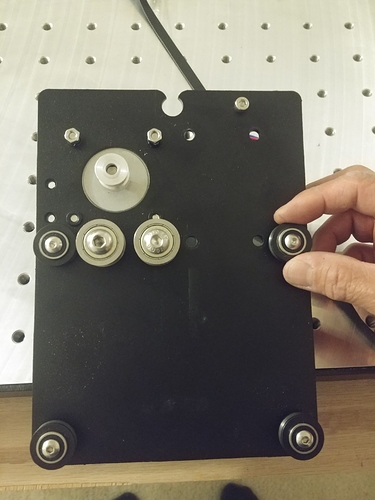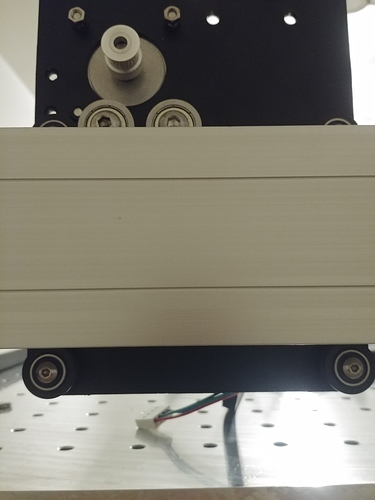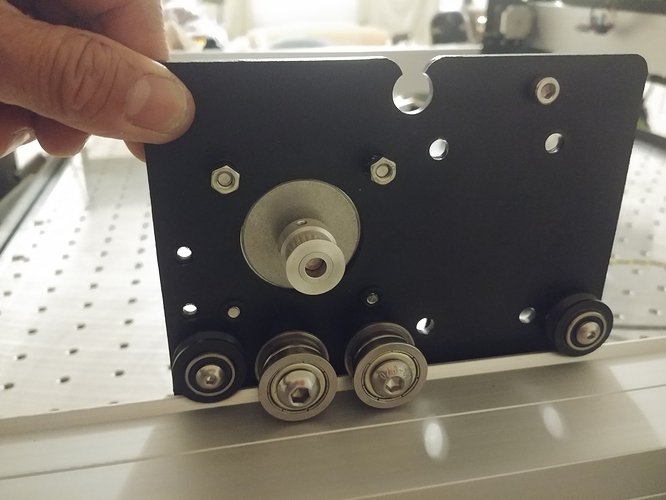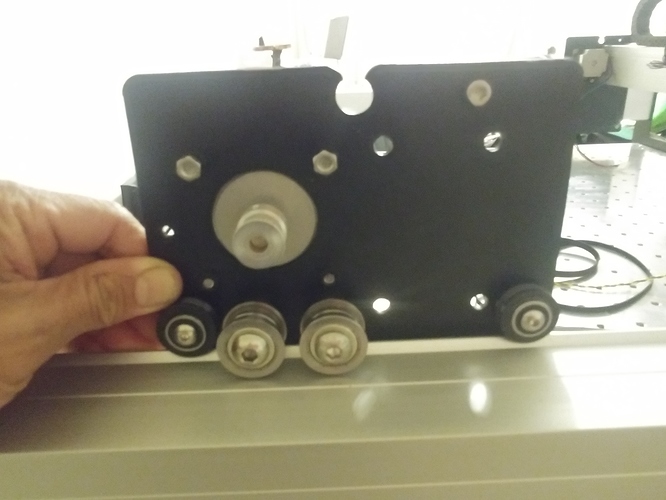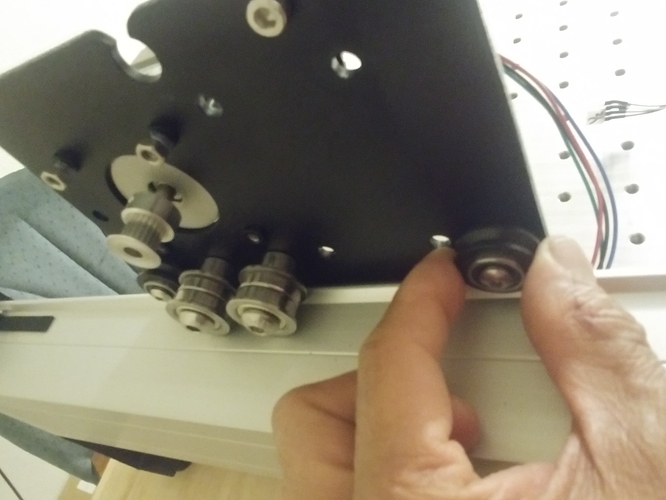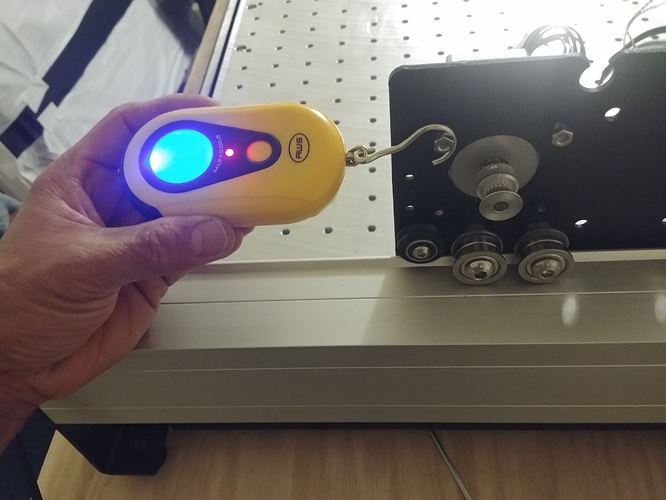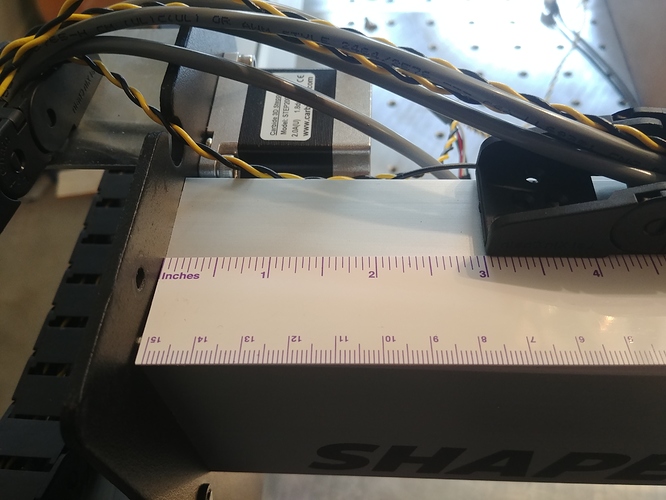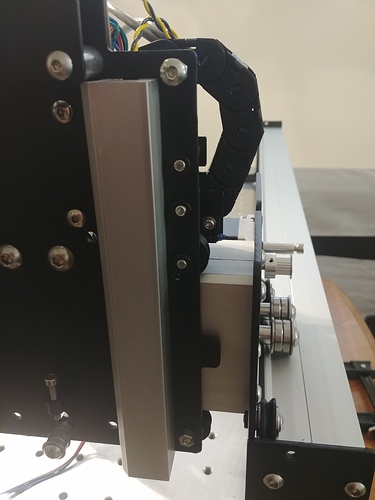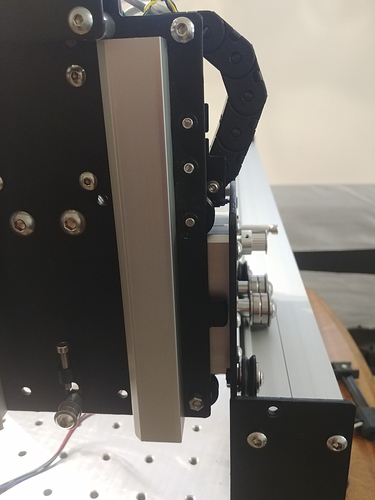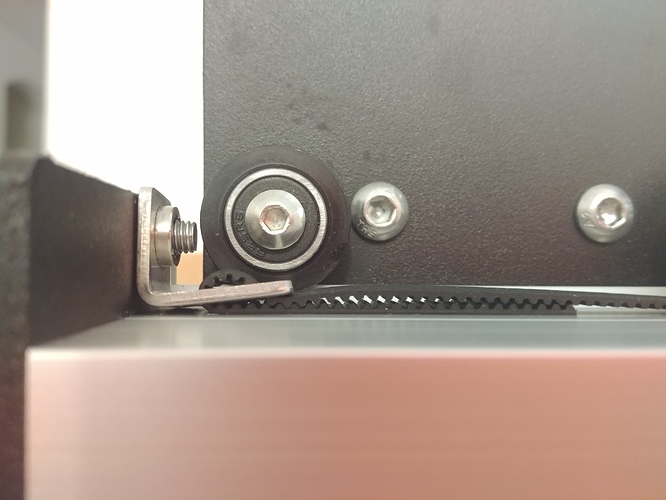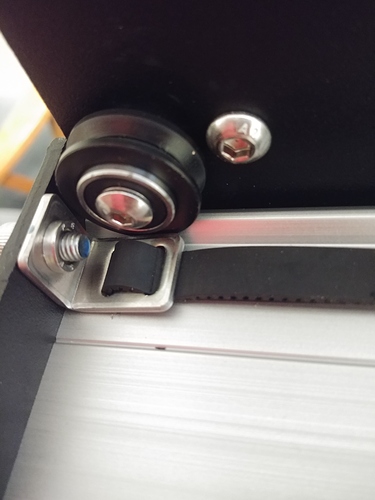This is a 2 part adjustment of the V-wheel. I am not sure if this is the correct way since I have no experience with this CNC machine. However, this is how I am attempting to adjust the V-wheel.
1) Go-Nogo adjustment.
2) V-wheel slippage and out of round check (flat spot).
Since the V-wheels come installed from the factory, this would be a good time to check the V-wheels bearings. Rotate each V-wheels and check for smoothness. It should feel smooth and not notchy. Rotate back and forth, clockwise, counter clockwise … the objective is to feel that bearing for smoothness. So far, I found one bad notchy bearing.
The resulting cause of the notchy feel is that there are 2 bearings that are not seated parallel to each other. Under compression of the hex button bolt, this out of alignment causes the notchy feeling. Under no compression it goes undetected. So check ALL V-wheels under compression.
.
.
.
.
Go- Nogo
Lift up on either corner of the carriage and take note of the up and down play.
Adjust the eccentric nut “Equally” and in small increments such that there is no up and down play.
With both hands on each upper corners of the carriage plate, moving in opposite up and down direction, feel for any play. The objective is to creep up in adjustment by rotating the eccentric nut thus removing any play.
The pix only shows me using one hand. That’s because my other hand is taking the pix. Using both hands in on opposite corners/ends give you the added leverage as you rock the carriage up and down feeling for that minute amount of play.
ALWAYS verify that the hex bolt is snug during each adjustment of the eccentric nut.
Additional upward and downward force will reveal the play/gap between the V-wheel and V-guide.
Tighten the V-wheel hex bolt. Note that by tightenning the hex bolt the adjustment will change to tighter or loose fit. Verify for any up and down play on both corners.
With your fingers in this position, move the carriage plate back and forth. Feel for any lateral play. Do the same for the opposite end. There should be none. If there is, check and see if the hex bolt is tightened. Also check if there is up and down play. Adjust as necessary.
This pressure, back and forth seats the V-wheel onto the V-guides and checks for additional minute play. I discovered this verification check by accident when I noticed a bump while traversing the carriage along the rails. When I applied this back and forth motion I noted additional play. Readjusted both V-wheels and the bump went away.
.
.
.
.
V-wheel out of round check
Rotate each V-wheel. You should feel a drag or slippage. The carriage will feel like it wants to traverse along the rail. Continue rotating the V-wheels while restraining the carriage and check for any flat spots. It should feel smooth. You will know if there is an issue with the V-wheel, because there will be a feeling of a detent. I found 1 V-wheel on my carriage that had a dead or flat spot.
.
.
.
.
V-wheel Slippage/Friction Adjustment.
This is difficult to describe how to go about since it is all about feel. For those that understand how a feeler gage works this the same principle.
However, I will use a fish scale to provide you with a visual. There are no specs for this procedure, just know that too much load on the bearings will create that bump feeling and may damage the inner walls of the V-wheel bearing (notchy).
Rotate the lower V-wheel while restraining the carriage from moving. Note the pressure of rotation and the friction from the V-wheel slipping. Verify that this friction and rotation force required to rotate the V-wheel are the same for both V-wheels.
Using a fish scale, although difficult to standardize, I am able to exert a force of approximately 1.2 lb on the fish scale. I have found that the fish scale is not necessary, but it gives you and ideal for “visual to feel” when determining how much drag or friction it takes for the V-wheels to slip while restrained. After several V-wheel adjustments the feel will become second nature and you can make both V-wheels with equal slippage.
The objective is to know the right feel of friction while rotating the lower V-wheels and that both V-wheels feel the same amount of resistance/drag.
The key to the correct adjustment to get that resistance/ drag is creeping up on the up/down play and knowing went to back off in adjusting the eccentric nut. If unsure back off the eccentric nut, tighten the V-wheel hex bolt, check for play repeat as necessary.
After all is said and done, you can remove the hex bolt and add loc-tight. Or add loc-tight during the adjustment process and be done.
When you are satisfied with the adjustment, move the carriage along the entire rail and take note of any bumps or noise.
You can now assemble the carriage to its respective rails.

